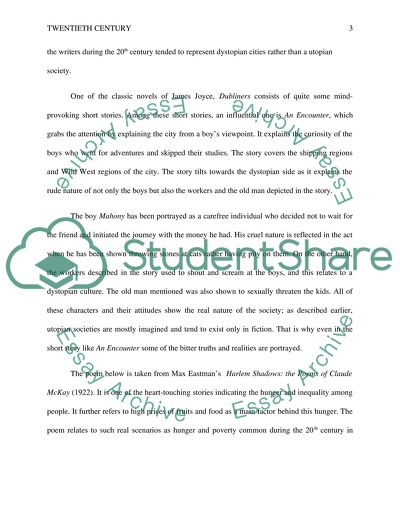Cite this document
(“Twentieth-century representations of the city tend to be dystopian Assignment”, n.d.)
Retrieved from https://studentshare.org/literature/1601720-twentieth-century-representations-of-the-city-tend-to-be-dystopian-rather-than-utopian-discuss-this-statement-in-relation-to-two-of-the-following-at-least-one-short-story-from-dubliners-metropolis-two-new-york-texts-poems-andor-prose-works
Retrieved from https://studentshare.org/literature/1601720-twentieth-century-representations-of-the-city-tend-to-be-dystopian-rather-than-utopian-discuss-this-statement-in-relation-to-two-of-the-following-at-least-one-short-story-from-dubliners-metropolis-two-new-york-texts-poems-andor-prose-works
(Twentieth-Century Representations of the City Tend to Be Dystopian Assignment)
https://studentshare.org/literature/1601720-twentieth-century-representations-of-the-city-tend-to-be-dystopian-rather-than-utopian-discuss-this-statement-in-relation-to-two-of-the-following-at-least-one-short-story-from-dubliners-metropolis-two-new-york-texts-poems-andor-prose-works.
https://studentshare.org/literature/1601720-twentieth-century-representations-of-the-city-tend-to-be-dystopian-rather-than-utopian-discuss-this-statement-in-relation-to-two-of-the-following-at-least-one-short-story-from-dubliners-metropolis-two-new-york-texts-poems-andor-prose-works.
“Twentieth-Century Representations of the City Tend to Be Dystopian Assignment”, n.d. https://studentshare.org/literature/1601720-twentieth-century-representations-of-the-city-tend-to-be-dystopian-rather-than-utopian-discuss-this-statement-in-relation-to-two-of-the-following-at-least-one-short-story-from-dubliners-metropolis-two-new-york-texts-poems-andor-prose-works.


